My News and Reviews
I think I’m finally getting back to my regular posting schedule. I get the week between Christmas and New Year’s off of work which is letting me catch up on a few things. (Sort of. Life has still been rather hectic of late.) Last week I posted an in-depth review of one of Chromatic Press’ most recent paperbacks, Jessica Chavez’s debut novel Dead Endings, illustrated by Irene Flores. The novel has a fantastic combination of horror, mystery, and snark, making it both fun and frightening. I’m looking forward to reading its sequel a great deal. And because the end the 2015 is fast approaching, last week I also posted my annual list of notable manga, comics, and novels of the year.
Quick Takes
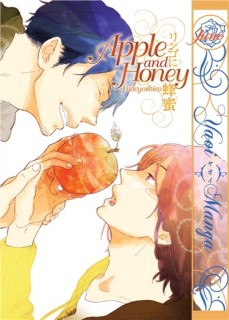 Apple and Honey / His Rose Colored Life by Hideyoshico. I wasn’t previously familiar with Hideyoshico’s work, but after reading the boys’ love collection Apple and Honey and its sequel/spinoff His Rose Colored Life, I sincerely hope that more is translated. In addition to the unrelated three-part story “Shades of Summer at the End of the World,” Apple and Honey introduces Natsuki and Komano who are the focus of His Rose Colored Life. Hideyoshico’s characterization is excellent—the characters have depth and the development of their relationships are entirely believable. Komano is this lovable outgoing goofball while Natsuki is much more reserved and unsure of himself. I was especially impressed by the sensitive portrayal of Natsuki’s anxieties and insecurities. While he desperately wants to be loved, he is also terrified of it, having been repeatedly hurt in the past; it’s hard for him to accept that it’s okay for him to be happy. (Natsuki also gets bonus points for majoring in information science which I hold a degree in but have never before seen in a manga.) Komano and Natsuki together make a wonderful couple, nicely balancing each other’s personalities.
Apple and Honey / His Rose Colored Life by Hideyoshico. I wasn’t previously familiar with Hideyoshico’s work, but after reading the boys’ love collection Apple and Honey and its sequel/spinoff His Rose Colored Life, I sincerely hope that more is translated. In addition to the unrelated three-part story “Shades of Summer at the End of the World,” Apple and Honey introduces Natsuki and Komano who are the focus of His Rose Colored Life. Hideyoshico’s characterization is excellent—the characters have depth and the development of their relationships are entirely believable. Komano is this lovable outgoing goofball while Natsuki is much more reserved and unsure of himself. I was especially impressed by the sensitive portrayal of Natsuki’s anxieties and insecurities. While he desperately wants to be loved, he is also terrified of it, having been repeatedly hurt in the past; it’s hard for him to accept that it’s okay for him to be happy. (Natsuki also gets bonus points for majoring in information science which I hold a degree in but have never before seen in a manga.) Komano and Natsuki together make a wonderful couple, nicely balancing each other’s personalities.
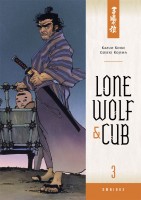 Lone Wolf and Cub, Omnibuses 3-5 (equivalent to Volumes 6-12) written by Kazuo Koike and illustrated by Goseki Kojima. The omnibuses are rather chunky, but I am so glad that Dark Horse is releasing Lone Wolf and Cub in a larger trim size; the previous edition was so small as to be nearly unreadable with my bad eyesight. Plus, it’s nice to be able to see Kojima’s excellent artwork more clearly. Lone Wolf and Cub is a fantastic series. Although there is an ongoing story to the manga, the individual chapters tend to be somewhat episodic. Ogami Itto was once the shogun’s official executioner but after being framed as a traitor he has become an assassin seeking revenge. Accompanying him on his journey is Diagoro, his now three-year-old son who has known nothing but a life filled with death. Lone Wolf and Cub is a violent series. Ogami is an incredibly skilled and resourceful warrior, surviving multiple attempts on his own life even as he is hired to end those of others. But he is also a father. Some of the most compelling chapters in the manga examine the depth of Daigoro and Ogami’s bond more closely.
Lone Wolf and Cub, Omnibuses 3-5 (equivalent to Volumes 6-12) written by Kazuo Koike and illustrated by Goseki Kojima. The omnibuses are rather chunky, but I am so glad that Dark Horse is releasing Lone Wolf and Cub in a larger trim size; the previous edition was so small as to be nearly unreadable with my bad eyesight. Plus, it’s nice to be able to see Kojima’s excellent artwork more clearly. Lone Wolf and Cub is a fantastic series. Although there is an ongoing story to the manga, the individual chapters tend to be somewhat episodic. Ogami Itto was once the shogun’s official executioner but after being framed as a traitor he has become an assassin seeking revenge. Accompanying him on his journey is Diagoro, his now three-year-old son who has known nothing but a life filled with death. Lone Wolf and Cub is a violent series. Ogami is an incredibly skilled and resourceful warrior, surviving multiple attempts on his own life even as he is hired to end those of others. But he is also a father. Some of the most compelling chapters in the manga examine the depth of Daigoro and Ogami’s bond more closely.
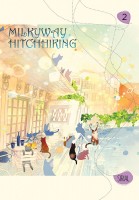 Milkyway Hitchhiking, Omnibus 2 (equivalent to Volumes 2-3) by Sirial. I’m not entirely certain, but I believe that with the second omnibus Milkyway Hitchhiking is complete. (Because the manhwa is a series of largely unrelated stories, it can be difficult to tell.) Whether or not it is actually finished, Milkyway Hitchhiking continues to be a beautiful series. The full-color artwork is gorgeous, Sirial changing art styles and color palettes to better suit the mood of each of the stories. The manhwa ranges from brightly colored, upbeat tales to those that are more somber and melancholy. Some are based in reality while others incorporate elements of horror, science fiction, or fantasy. The only thing that really ties the individual stories in Milkyway Hitchhiking together is the presence of the Milkyway, a space-time cat. Although she’s the titular character, Milkyway Hitchhiking isn’t necessarily about Milkyway herself. She frequently has an important role to play, however the focus of the series is much more on the stories of the people she encounters.
Milkyway Hitchhiking, Omnibus 2 (equivalent to Volumes 2-3) by Sirial. I’m not entirely certain, but I believe that with the second omnibus Milkyway Hitchhiking is complete. (Because the manhwa is a series of largely unrelated stories, it can be difficult to tell.) Whether or not it is actually finished, Milkyway Hitchhiking continues to be a beautiful series. The full-color artwork is gorgeous, Sirial changing art styles and color palettes to better suit the mood of each of the stories. The manhwa ranges from brightly colored, upbeat tales to those that are more somber and melancholy. Some are based in reality while others incorporate elements of horror, science fiction, or fantasy. The only thing that really ties the individual stories in Milkyway Hitchhiking together is the presence of the Milkyway, a space-time cat. Although she’s the titular character, Milkyway Hitchhiking isn’t necessarily about Milkyway herself. She frequently has an important role to play, however the focus of the series is much more on the stories of the people she encounters.
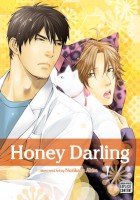
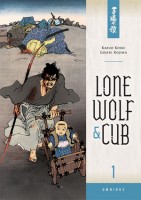

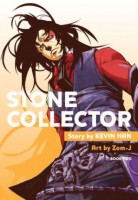
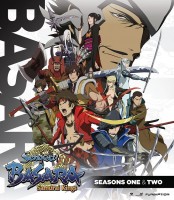
 MICHELLE: Sure!
MICHELLE: Sure! Moving swiftly from contemporary to classic, our second read this week was the first omnibus volume of Kazuo Koike and Goseki Kojima’s
Moving swiftly from contemporary to classic, our second read this week was the first omnibus volume of Kazuo Koike and Goseki Kojima’s